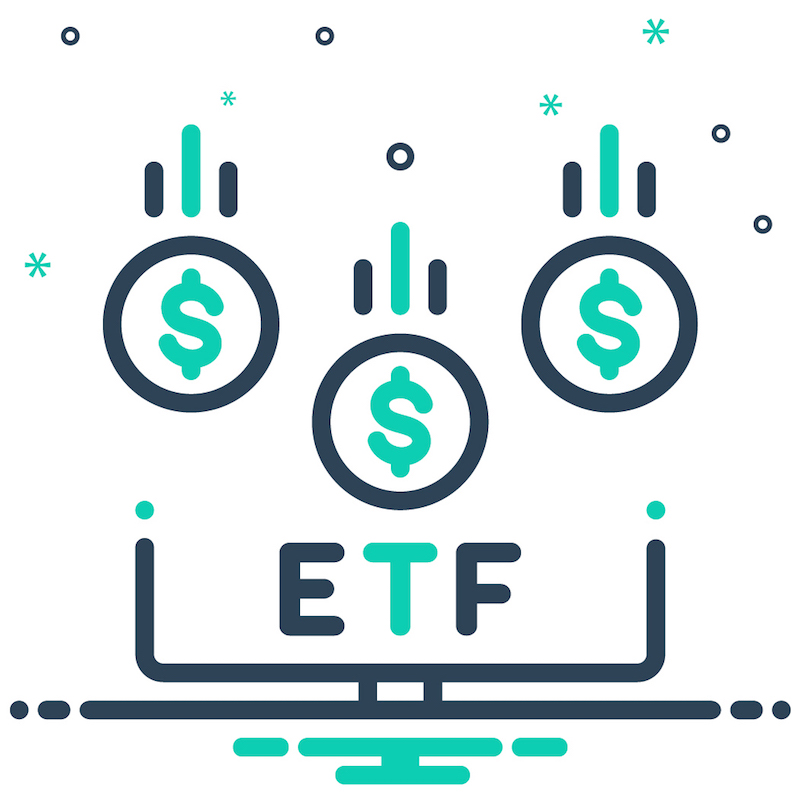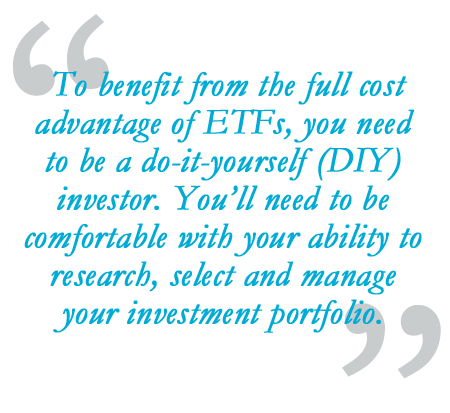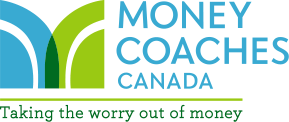By Daniel Evans, CFP® & Investment Coach
 Most Canadians are very familiar with mutual funds. In simple terms, a mutual fund is made up of a collection of individual stocks, bonds or other securities chosen by a fund manager with the goal of generating returns for the investors while balancing risk. Investors pay a percentage fee, referred to as the Management Expense Ratio (MER), to cover the cost of the management, marketing and administration of these funds. In Canada the average MER is around 2%.
Most Canadians are very familiar with mutual funds. In simple terms, a mutual fund is made up of a collection of individual stocks, bonds or other securities chosen by a fund manager with the goal of generating returns for the investors while balancing risk. Investors pay a percentage fee, referred to as the Management Expense Ratio (MER), to cover the cost of the management, marketing and administration of these funds. In Canada the average MER is around 2%.
With greater focus on the cost of investing and fee transparency in Canada, it’s not surprising that there is growing interest in Exchange Traded Funds (ETFs), which in most cases have lower fees than mutual funds. But what else should you know about this up-trending investment option before deciding if ETFs are right for you?
An ETF Primer
An ETF holds investments that typically track an index, commodity, bonds or a grouping of assets. Unlike an actively managed mutual fund that strives for higher returns for its investors, an ETF seeks to closely follow the return of the thing it tracks, minus a small MER.
Each ETF trades like a stock on the exchange. Each has its own ticker symbol and its value changes throughout the day. It can also be bought and sold at any time during trading hours. This is very different from a mutual fund that can only be purchased or sold at the end of a trading day, and whose value is determined only at market close.
You might also be interested in knowing that the creation of the ETF has a Canadian connection. Although the first attempt at creating an ETF was in Chicago in 1989, which proved unsuccessful due to the actions of a federal judge, the next successful attempt occurred on the Toronto Stock Exchange in 1990. The Toronto 35 Index Participation Units (TIPs 35) tracked the TSE-35 Index. This innovative, less costly entrant to Canadian equities spurred the creation of more ETFs in Canada. In 1993, the US modeled the Canadian success with the creation of the SPDR S&P 500 Trust ETF which is still one of the most popular ETFs in the world.
The Growing Popularity of ETFs Among Canadian Investors
According to The Investment Funds Institute of Canada (IFIC), as of February 2024 Canadian ETF net assets exceeded $403 billion. This represents a 23% increase over February 2023, and a 138% increase from five years ago.
The number of ETFs has also ballooned. In terms of the Canadian market, 15 years ago there were only 110 ETFs and four ETF providers, with about $32 billion invested. In February, the Canadian ETF Association (CETFA) reported there are over 1,100 ETFs and 40 sponsors. Certainly, the wealth management industry has taken notice in a big way!
Although ETFs still hold a smaller market share compared to the Canadian mutual fund industry (about $2 trillion invested in mutual funds according to IFIC), they have outsold mutual funds for several years, with $2.25 billion higher sales for ETFs this past February.
With such growing popularity, it would seem that ETFs are at least worth a look. But as with all things in life, there are pros and cons, and no investment is suited for everybody.
What Are the Advantages of an ETF?
1. Lower Fees
An ETF aims to track, but not surpass, the return of the “thing” (i.e. index, commodity, etc.) it follows. If passively managed in this manner, it is a less expensive option than a mutual fund which employs a fund manager and support team actively working to achieve a higher rate of return. The ongoing cost of owning units of an ETF through a discount brokerage account is in the 0.05% to 0.8% range (usually towards the lower end of that range for passively managed ETFs), compared to 2% or more per year on a typical Canadian mutual fund.
2. Returns
The annual SPIVA® (S&P Indices Versus Active) Canada Scorecard measures the performance of Canadian actively managed funds against their respective benchmarks over various time horizons. Similar to prior year reports, the 2023 report indicates that more than 75% of active funds underperformed their benchmark by a significant margin.
There can be many reasons for the widespread underperformance of actively managed mutual funds, but much higher fees compared to low-cost index-based products are often cited as a leading cause. Note that index-based investments will always slightly underperform the index they track, but the difference should be close to the MER charged.
3. Diversification
Investing in a range of assets is less risky than a single stock or bond. A single ETF could provide diversification across anywhere from a handful to several thousand holdings, spread across various industries, geographies, and asset classes.
Investing in several ETFs – if properly chosen – can increase the diversification of your holdings even more. In addition, you can adjust your allocation in multiple ETFs to match your risk tolerance and financial goals. There are now also “Asset Allocation” ETFs, essentially an ETF that holds other ETFs in a particular ratio to provide diversification and automatic rebalancing without any further action required by the investor.
With an ETF, there are no minimum investment requirements, and you can purchase as little as one unit. And fear not if, as an investor, you love receiving a dividend cheque from your investments each month. Dividends are collected from the companies within the fund by the ETF fund manager and passed on to you.
So, what’s the downside?
The Lowest Fees Don’t Come with Any Advice
Lower fees are a key advantage of investing using ETFs. However, the extent of the advantage is affected by the way you invest. 
To benefit from the full cost advantage of ETFs, you need to be a Do-It-Yourself (DIY) investor. Going the DIY route means you need to be comfortable with your ability to research, select and manage your investment portfolio. As mentioned above, there are now hundreds of Canadian ETFs – not to mention hundreds or thousands more US-based ETFs which can also be purchased by Canadians, albeit with exchange rate and possibly tax implications – with various risk and return characteristics. Assembling an appropriate ETF portfolio for your needs is not a trivial task.
Beyond creating your ETF portfolio, many investors have an irresistible urge to tinker with their investments and turn what should be a passive, low-cost, low-effort, buy-and-hold investment into a constantly churning mishmash of overlapping and inappropriate ETF products. This speaks more to a lack of an investment plan, and can certainly happen with mutual funds as well, but the more DIY-oriented nature of ETF investing often means there isn’t a knowledgeable advisor around to pump the brakes.
If you would like assistance with building and managing your ETF portfolio, you can choose to work with a traditional or online advisor, however additional fees will apply for their services in addition to the ETF’s MER.
For example, if you purchase your investment through an online advisor (also known as a robo-advisor), fees for ETF portfolios are typically in the 0.5% to 0.8% range, while with a traditional investment advisor, your ETF portfolio could cost you 1% or more.
Trading Costs and Tracking Error
If you tend to make numerous small contributions to your investment portfolio, the trading fees associated with ETF purchases can add up. Some discount brokers have responded by offering “commission free” ETF purchases and/or sales. Make sure you understand the fees associated with ETF purchases at your broker and try to keep them under 1% of your transaction.
When shares in an ETF are bought and sold in low volumes, the fund is referred to as thinly-traded. This can lead to a wide bid-ask spread (the difference between the highest price that a buyer is willing to pay for a share and the lowest price that a seller will accept to sell it), and lower liquidity. Or put another way, you may be forced to pay a little bit more when buying, or receive a little bit less when selling, for an ETF that is not actively traded day-to-day. This is usually not an issue with larger and more popular ETFs.
Before investing it’s also important to investigate the ETF’s tracking error. The goal of an ETF is to target, or track, a specific market index. The success to which it does or doesn’t hit its target is the tracking error. If a fund is closely following its benchmark, it will have a low tracking error. A high tracking error will lead to a portfolio that (unintentionally!) performs differently than the index it follows.
Ever Growing Number and Types of ETFs
As the popularity of these funds increases, new types of ETFs are being created around different markets. Some ETFs are actively managed, utilizing one or more strategies to tailor their risk and return profile to different investor preferences. These more complex ETFs usually have significantly higher fees, although not as high as what some active mutual funds charge.
Here is just a sampling of the different types of ETFs available:
- Index: Designed to track a particular index, like the S&P 500 or NASDAQ
- Commodity: Designed to track the price of a commodity, such as gold, natural gas or coffee, or even cryptocurrencies.
- Covered Call Uses stock options to generate additional income but can limit the investment’s growth potential.
- Leverage: Boosts the effect of market movements… in both the up and down directions!
- Inverse: Designed to profit from a decline in the underlying mark or index
- Industry: Designed to provide exposure to a particular industry, such as high tech, defense or agriculture
- Style: Designed to track an investment style or market capitalization focus, such as large-cap value or small-cap growth
- Bond: Designed to provide exposure to bonds of essentially every type available
- ESG: Reflects a particular set of environmental, social, and governance principles or values
- Asset Allocation: Typically a “fund of funds”, containing multiple ETFs covering multiple markets and asset classes for diversification, which is automatically internally rebalanced by the manager
ETFs Still Require Substantial Research and Decision Making
There is a lot to think about when considering an ETF; like any investment, it must meet your personal needs and be matched to your ultimate investment goals.
 Because of its humble beginnings as a passively managed fund that tracked a particular index, ETFs are often regarded as a quick entry to an uncomplicated investment. But as the variety of funds listed above indicates, the scope of ETFs is expanding. There are thousands of ETFs listed on the Canadian and US stock exchanges serving both broad and niche areas of investing, and that number is growing annually.
Because of its humble beginnings as a passively managed fund that tracked a particular index, ETFs are often regarded as a quick entry to an uncomplicated investment. But as the variety of funds listed above indicates, the scope of ETFs is expanding. There are thousands of ETFs listed on the Canadian and US stock exchanges serving both broad and niche areas of investing, and that number is growing annually.
So how do you decide whether or not in invest in ETFs?
Before you make investment decisions of any sort, you should have clear goals and a plan to achieve them. You also need to be honest about the time, skill and energy that you have to devote to managing your investments. A trusted, knowledgeable, unbiased ally can guide you towards an investment strategy that fits your overall financial plan and personal preferences. If you want this year to be the year that you take charge of your financial future, request a consultation with one of our Money Coaches.
This post first appeared in 2019. It has been updated with current data and/or information and republished.



An additional downside is actually getting the investment made! Maybe its just the time of year, but I am hearing people spending a lot of time on the phone waiting for an agent at popular discount brokers. I personally waited 28 minutes to speak to someone at TD Waterhouse today. No wonder 4 of 5 discount brokerage accounts opened up are not being funded or traded in. It’s nearly impossible to get someone to help you. So DIYer’s need to be able to trade online as well.
Also with respect to returns, while much is made about how active mutual funds struggle to meet their benchmarks, many are not even trying (closet indexing) and 100% of ETF’s DO NOT beat their benchmarks. They trail them by the fee, modest as it is.
I agree with Karin, its a good idea to seek some advice before going down the ETF path. Of course good advice will cost a modest amount that needs to be factored in as well.
” The cost of purchasing or selling ETF shares through a discount brokerage account is in the 0.05 to .5% range, compared to 2% or more per year on a mutual fund.”
Karin — don’t you mean the annual cost of HOLDING ETF shares?
Also, there are some brokerages (Q-Trade being one) that offer no-commission PURCHASES for certain limited popular ETFs. And that can be an advantage (not a cost disadvantage).
Good point Toby. Like mutual funds, ETFs have an ongoing management fee typically in the range of .05 – .5%. There may also be a commission for the purchase or sale of the ETF depending on where and how you buy the investment.
There is also the possibility of bid-ask spreads. This note from Morningstar is an example of this, particularly acute during times of high volatility. “In volatile markets, the Vanguard statement continued, it is more difficult for market-makers to price ETFs with certainty. “This can result in wider bid-ask spreads for a short period. We advise investors to avoid trading at market open or close since sometimes the bid-ask price is a little unsettled and wider at these times.”
http://cawidgets.morningstar.ca/ArticleTemplate/ArticleGL.aspx?culture=en-CA&SAL=false&id=847876
not all ETF’s are passively managed. ETF’s are not necessarily a DIY only investment vehicle. advisors/brokers/planners can and do use them, some exclusively. mutual funds use them.